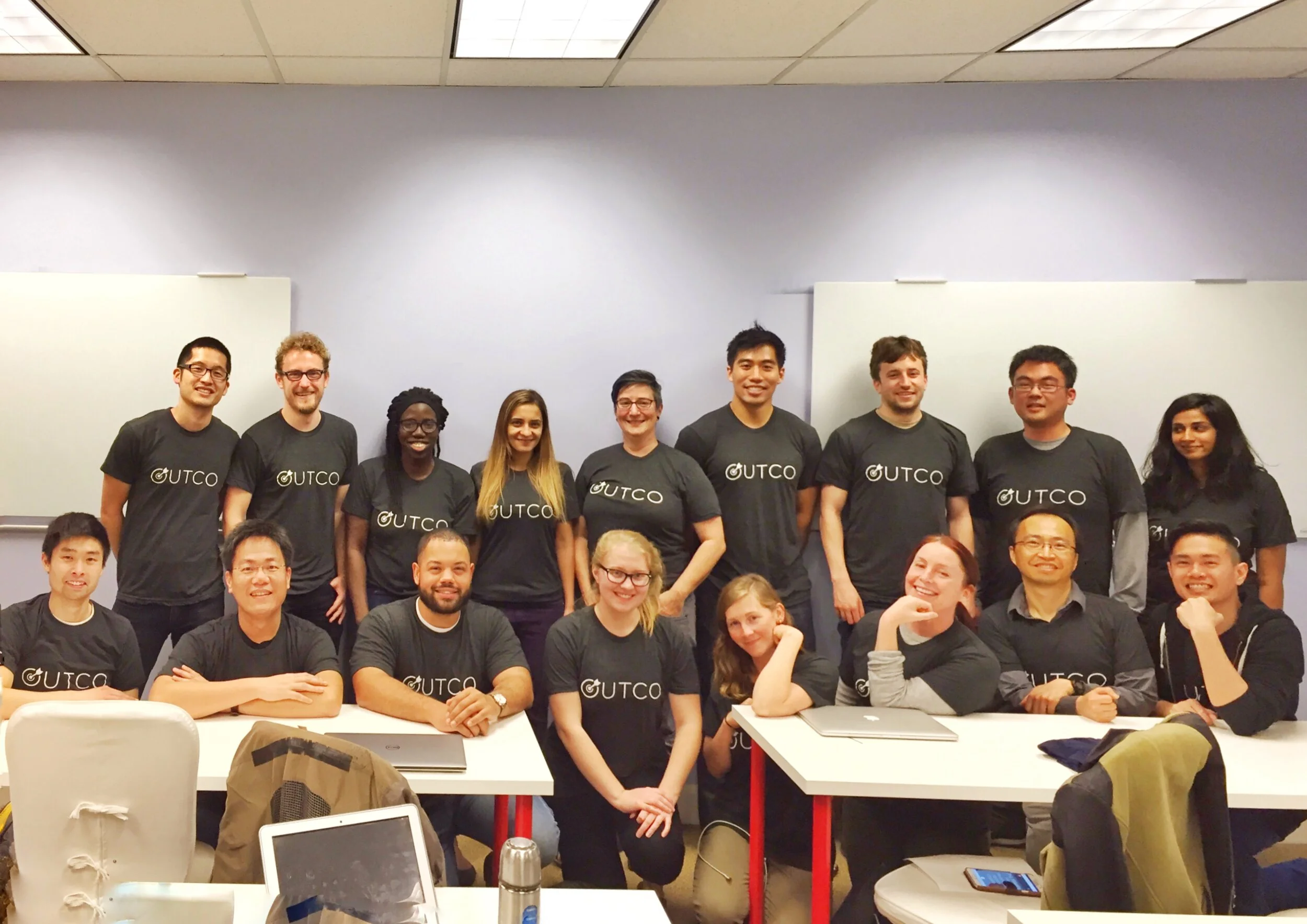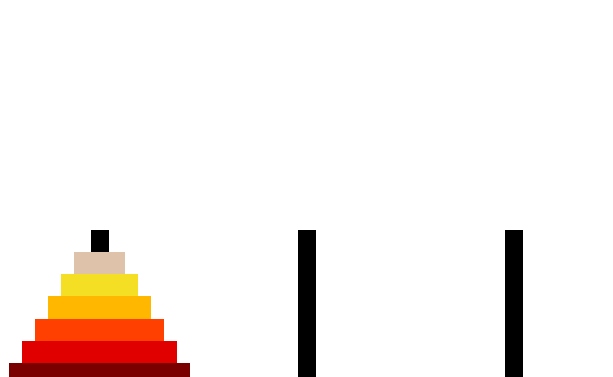A good analogy I’ve heard for this is trying to fill a jar with golfballs, sand, salt, and beer. You want to focus on the biggest things first, and then work your way down if you have time.
Again, this is where having a program like Outco’s helps by providing structure and guidance on the most important aspects of the job search to focus on.
Capabilities
When you’re a hammer, every problem looks like a nail.
Your capabilities are not necessarily what you do on a daily basis, but what you could theoretically do if necessary.
I don’t ride a bike every day. Nor do I surf or play the piano. This is partially because I don’t have them in my environment, or if I do, I have no need to do them every day. However, I know how to do all those things.
Learning new skills is a big part of growth, both personally and in your career. New frameworks are constantly coming in and out of fashion. Different jobs will use different internal toolsets that may be familiar or completely novel. And new people you meet will have different communication styles and individual quirks that you’ll have to adapt to.
There are certain skills associated with job search which you may not possess, and it’s important to identify what those are so you can learn them. This is more meta-skill: the ability to learn how to learn, which can also be developed.
That way, you’ll be able to identify what kinds of practice problems you need to focus on. What kinds of companies you will be the strongest candidate to apply for will depend on the skills you have developed and can demonstrate. And understanding how to communicate with recruiters, interviewers, and hiring managers will be crucial to your success.
Once again, you may not need to use all these skills.
But the bigger your toolbox, the greater the variety of problems you can solve.
Beliefs
Whether you think you can or you can’t, you’re right.
What you believe to be true has a tremendous influence over your life.
The assumptions we make about the world around us, shape what kinds of actions we take, and what we believe to be possible. They are the foundation upon which we build our model of the world. And like any foundation, it’s strength will determine how sturdy whatever structure grows out of it.
This context is even more abstract than the last because beliefs can be hard to define. Often times we aren’t even aware of our beliefs and operate under them implicitly. Typically we don’t question our assumptions and simply take the conclusions we derive from them for granted.
But questioning assumptions is a good habit to get into, at least from time-to-time. A lot of conflict and disagreement between people stems from a mismatch in beliefs. This can either be because one side is willfully ignoring facts, but often it’s because they are simply unaware.
An important thing to remember is that we are all operating with incomplete information when we make decisions, and being able to identify where our assumptions are shakiest so we can address them and look for new evidence to support or replace them
I’ve seen a lot of folks struggle with negative beliefs about their ability to get a job in the tech industry or doubt their ability to solve certain problems or pass technical interviews.
But again, this is where that interplay between layers comes in. As you start to see your skills and capabilities grow, you might start to believe that you’ll be able to pass the interview. As you start developing new habits and behaviors, things will get easier, and you’ll begin to optimize how you do things. You’ll begin to believe things that used to be hard, are now easy, and that in itself will remove some of the anxiety, stress, and fear from the process.
Developing a strong belief system is an important part of life, and plays a big role in being successful in your career.
Identity
Be yourself, everyone else is already taken.
Identity is an even trickier thing to pin down and define than individual beliefs, but most people would agree that it is a real, and important thing.
We’re all shaped by our past experiences and background. We have individual identities, but we also have cultural identities, both of which influence one another.
Because identity is such a hard concept to define, we tend to describe ourselves then in terms of our roles and relationships relative to others. We are parents, siblings, children. We are also defined by our heritage, professions, hobbies, or activities.
She is a soccer player. He is a singer. They are American. I am an Outcoder.
We use phrases like those to show where we are in different hierarchies and webs of relationships. They have practical utility because they help others quickly gain meaningful information about us.
But the flip side of that is when we overgeneralize and make too many assumptions about identity. This is where negative stereotypes and biases creep in. It’s something that is always worth being careful about and to keep in the back of one’s mind.
Because identity isn’t just something we showcase externally. It’s also deeply personal and changes over time. It took me a long time to actually see myself as a software engineer but Outco helped me do it. And once that became part of my identity, it shifted my beliefs on what I thought I could do and build.
Everyone is on a voyage of self-discovery, and as we find out more things about ourselves, such as our likes/dislikes, interests, passions, aversions, curiosities… we can make better decisions. It allows us to focus our efforts, build the appropriate skills, and place ourselves in the correct environments.
Mission
Those who say it can’t be done should not interrupt the ones doing it.
This last layer also has to do with what you find valuable, which to me is something that is incredibly personal and impossible to ever fully define.
Value is something that is very much contextual and prone to change over time.
What you value at 10 years old will likely not be the same as what you value at 20. Which will be different at 40, and then again at 80.
It also depends on what situation we find ourselves in. If we’re hungry we value food. If we’re in danger we’ll value safety. If we’re lonely we’ll look for companionship. These shifts in values can be subtle and depend on what our needs are at that moment.
But ultimately, it’s important to make the distinction between instrumental values, and final values.
Instrumental values (or goals) can be thought of as stepping stones. They help us move towards some greater ends, and derive their value from how well they do their job of getting us closer to the thing we really want.
For instance, a car has instrumental value in that it can get us from point A to point B in a certain amount of time. How quickly it gets us there, how efficiently, or in what kind of luxury it does so increases its instrumental value.
But the final value is ultimately getting us to our destination. The destination is the thing that we’ve ascribed inherent value to and decided that it’s worth pursuing.
This is where it gets tricky. What we decide is a final goal, is somewhat arbitrary, but also very profound. It might be something as big and broad as seeing the value in preserving the environment, enjoying art for its own sake, or ending poverty across the world. But it could also be narrower, like valuing code cleanliness or enjoying helping other aspiring engineers climb their career ladder.
The point is, that we all get to decide our value system which then informs our priorities. This is the deepest level because our mission transcends our individual identity and can live on through our legacy.
It goes without saying that having a strong sense of purpose is extremely important when it comes to having a successful career. It helps keep you going in the face of adversity and you only need to look at the success stories of leaders and pioneers across any industry to see the power of having a strong mission and purpose.
Conclusion
Hopefully, this was a useful model for thinking about life in terms of different layers. It’s best used as a tool for reflecting on what’s working in your life and what isn’t. It allows you to understand how the different pieces of your life fit together and feed off one another so that you can play around with them to find which configurations work best.
Outco does a great job at addressing all the different layers in different ways, through structured curriculum, practice problems, community, and coaching. We all have roadblocks, and having good mental models and support systems are the key to overcoming them.































































![How Ryan Landed a Job at Microsoft - Outco Program Review [VIDEO INTERVIEW]](https://images.squarespace-cdn.com/content/v1/58028c1e29687f239061ebb1/1552517951250-DGZUOP87SURE7DTTKP0L/Screen+Shot+2019-03-13+at+2.56.40+PM.png)

